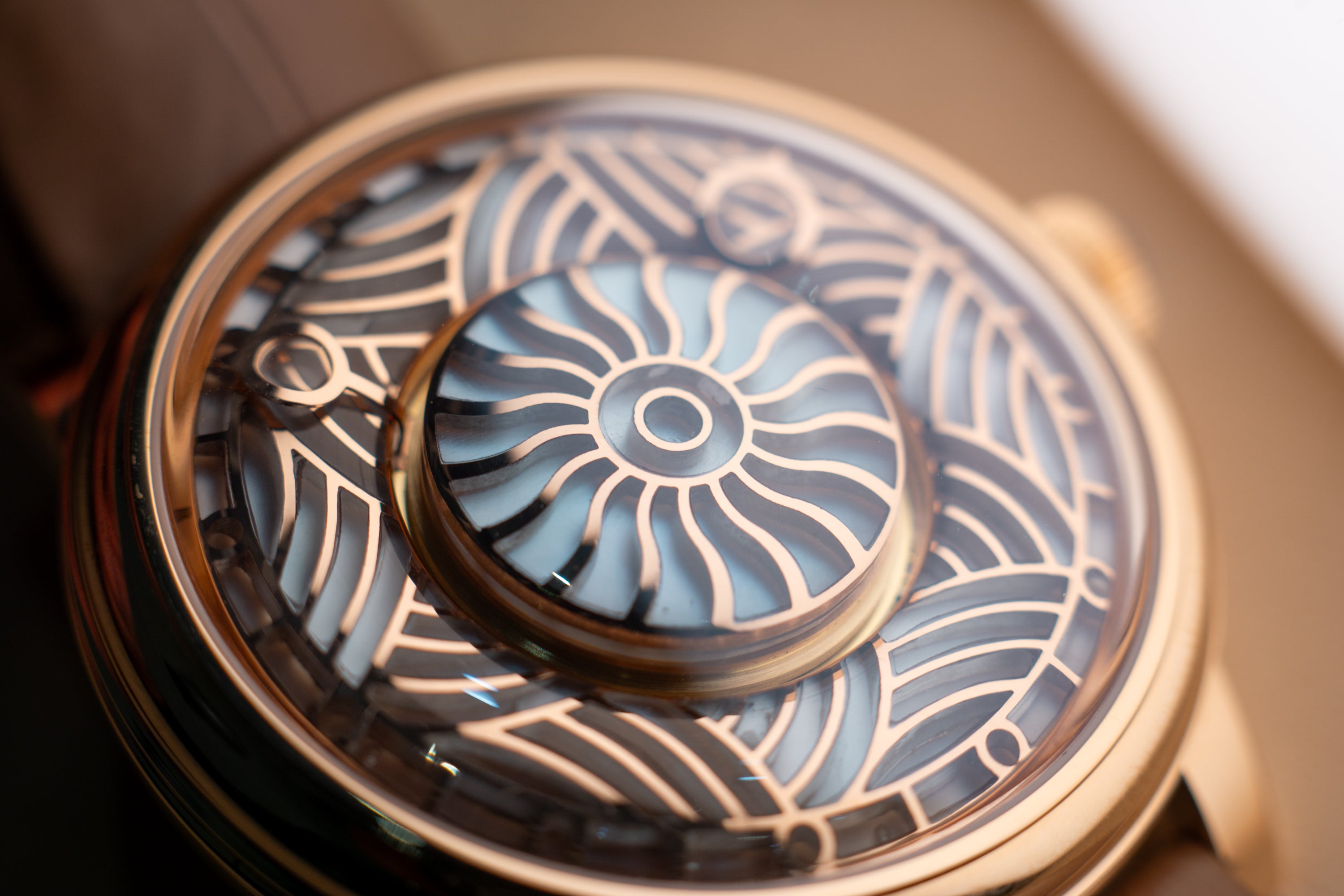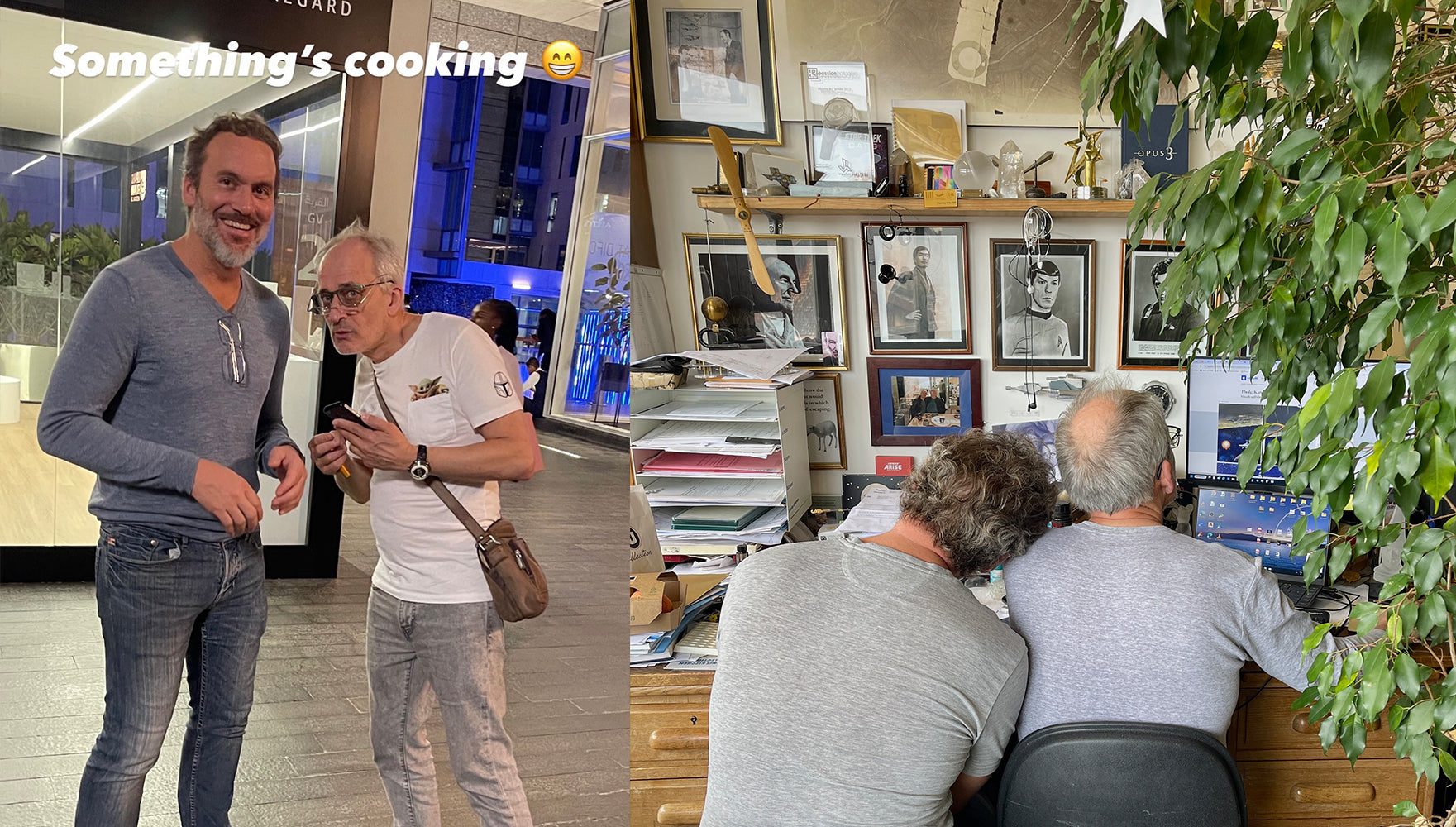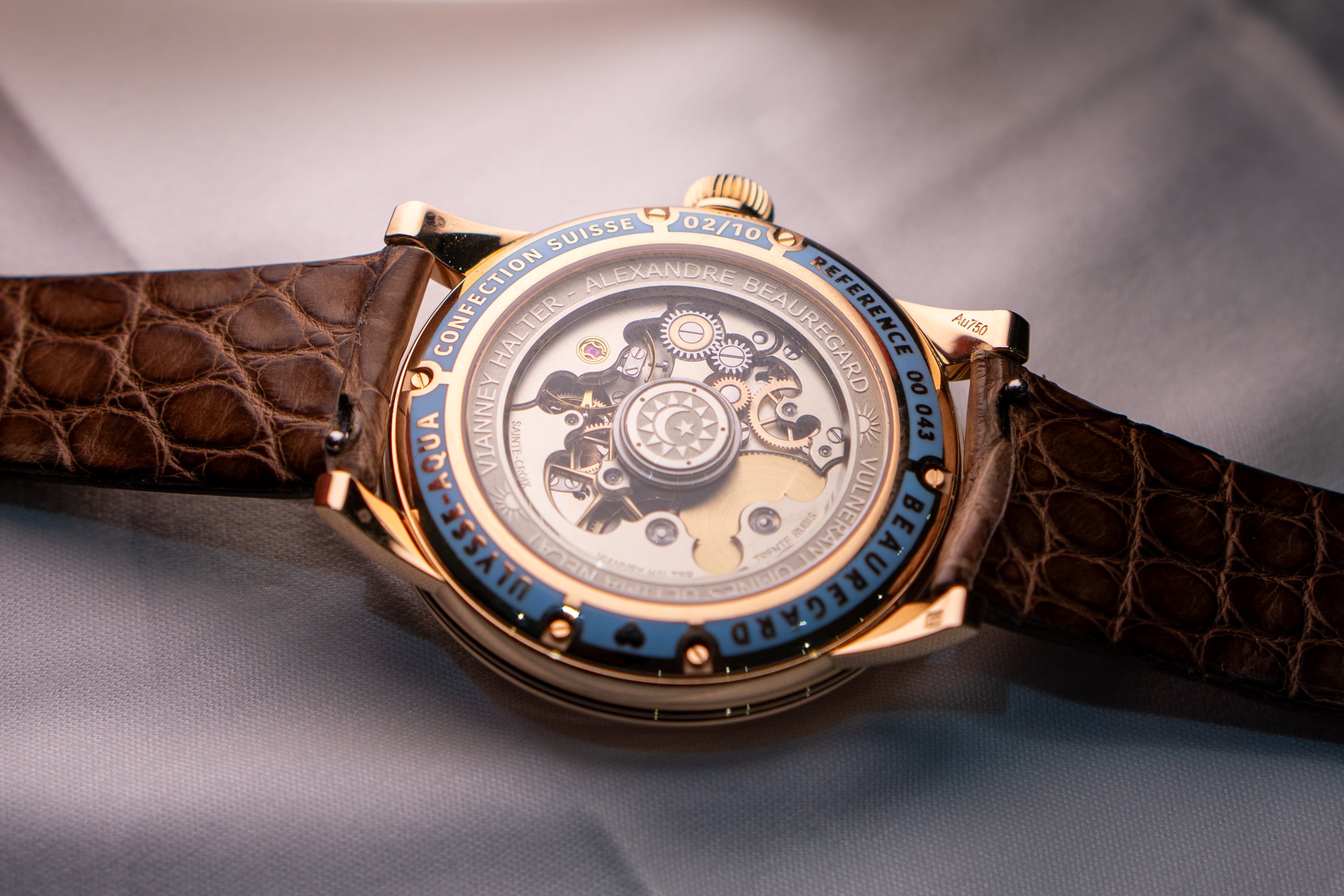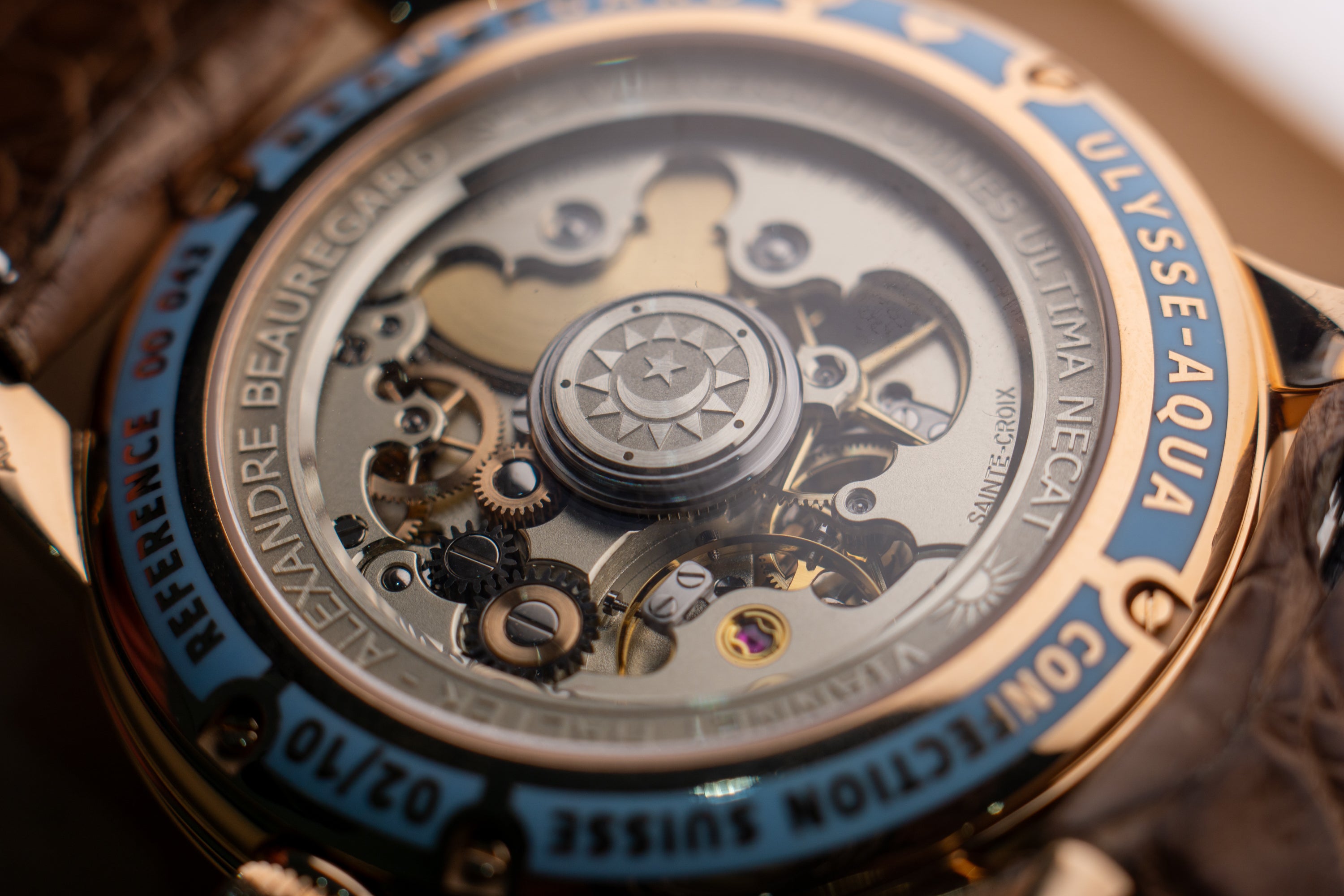The Beauregard Ulysse And Its Epic Of An Origin Story

During my relatively short tenure writing about watches thus far (coming up on two years), I’ve grown accustomed to meeting with watch brands. The practice of sitting down with a representative, handling new watches, and asking questions about them is becoming increasingly familiar. Of course, this wasn’t always the case. When I think back to my first-ever meeting with a watch brand, I remember wondering, "is this what all brand meetings are like?". In retrospect, it was far from average. As you may have guessed, my first meeting was with Beauregard: the high-horology-meets-fine-lapidary independent based in Geneva, but whose craftsmanship crosses borders into Canada and the American Southwest.
I call that 2023 meeting “far from average” for a few reasons. First, it wasn’t with a brand representative, but with Alexandre Beauregard himself: the founder, artist, and craftsman behind Beauregard. Although meeting a brand’s founder is somewhat common amongst independents at Watches and Wonders, it makes for a standout experience, particularly when they’re as involved and passionate as Alexandre. Case in point: by the end of our 2023 meeting, Alexandre had pulled out his sketchbook (below) and was sharing his ideas and inspiration for future releases. He discussed not only the products that he was there to present, but his passion for learning, tinkering, and sharing his creations with others.

I say all this to provide context for the watch at hand, the all-new Ulysse. Beauregard is not your average watchmaker, and appropriately, this is not your average watch. If you’re unfamiliar with the brand altogether, I recommend catching up on last year’s coverage; it touches on all of Beauregard’s existing models. In that 2023 coverage, I mentioned Beauregard’s plan to release a men’s watch in the coming years. Until April 2024, their catalog was entirely geared toward women. When Alexandre told me about this unrealized men’s offering last year, he said that its dial would make the brand’s existing dials “look like child’s play”. Well, one year later, the watch is finally here. And it’s safe to say that he was right.
The Beauregard Ulysse’s One-of-a-Kind Dial

Beauregard’s first men’s watch — the Ulysse — measures 41mm in diameter and features a ‘stained glass window’ dial. This isn’t the kind of stained glass window you’ll find at a church. The ‘cames’, or structural design lines, are made of 18k rose gold rather than lead, and the ‘glass’ segments aren’t glass at all: they’re hand-polished aquamarine gemstones. Like those in every Beauregard watch, these gemstones are hand-selected by Alexandre and family at the Tucson Gem Show in Arizona: a far cry from Geneva (where the brand is based) or even Montreal (where the lapidary workshop is). The Ulysse’s initial run is limited to 10 pieces, all made in this 18k rose gold and aquamarine configuration.
Beauregard’s ‘stained glass’ technique is hardly comparable to that of traditional stained glass. There’s no real precedent for creating such small, intricate, organically-shaped mosaics with hard gemstones and solid gold; Alexandre had to develop and perfect his own technique. The dial’s size makes for ridiculously-low tolerances when measuring, cutting, and polishing these gemstones (hundredths of millimeters). Of course, this results in much trial and error, especially early on in the process. Any over-polished gemstone, even by a fraction of a millimeter, has to go. Setting it would require manipulation of the gold frame which would affect the fitment of the adjacent gemstone, and so on. There’s quite literally no wiggle room here. Needless to say, the end result is well worth the effort (I say not having done a lick of the work).

Of course, stained glass looks best with light shining through it. By placing a ‘stained glass window’ on your wrist, or atop a movement for that matter, you’re restricting the potential for light to shine through it by half. Luckily, Beauregard thought of this years ago – every translucent dial is placed atop a thin layer of iridescent mother of pearl, allowing light to reflect back through the gemstones. It should come as no surprise that with aquamarine gemstones, this effect presents similarly to light refracting in water: a nod to the Odyssey’s recurring symbol of the sea. For those unaware, Ulysses is the Latin variant of the Greek name Odysseus. This sea motif carries over to the movement’s bridge design.
The Beauregard Ulysse’s dial has been in the works for 4+ years. Alexandre has long pictured his foray into men’s watches, and from his earliest visions, he wanted it to showcase a ‘stained glass’ dial. Of course, we now know that this years-long journey (some may call it an Odyssey) resulted in the Ulysse, but when discussing such a personal artistic expression, it’s valuable to examine the process. Present at Beauregard’s W&W booth was a prototype stained glass dial from approximately 2021 (below). This was the first prototype made with gold and precious gemstones; the earlier ones were developed with silver and glass.

There are more differences than similarities between this prototype and the end product. Obviously, the stained glass concept had come to form, but you’ll notice an entirely different gold design, the inclusion of numerals, and multiple types of gemstones. However, the most obvious difference is the dial shape. This prototype dial is shaped like a ring (or a donut if you’re hungry). Until a serendipitous 2023 encounter between Alexandre and a certain master watchmaker occurred, the then-unnamed Ulysse was to be paired with a central flying tourbillon movement, the same one found in Beauregard’s Dahlia. This movement eliminates the need for a dial center; the tourbillon is the star of the show. Of course, the full-dialed Ulysse does not house this central flying tourbillon movement, but something new entirely. So, let’s dive into that serendipitous encounter.
The Beauregard Ulysse’s One-of-a-Kind Movement (and Story)

At Dubai Watch Week 2023, Alexandre happened to run into award-winning master watchmaker Vianney Halter. There’s actually a picture of this run-in (above, left). You probably see where this is going. On a whim, and according to Alexandre somewhat jokingly, he asked Halter if he would develop a movement for his years-in-the-making stained-glass brainchild. Not only did Halter say yes to the initial request, he said yes to every succeeding amendment that Alexandre brought up during the movement design. In an attempt to get Halter to shut down an idea, Alexandre made his requests increasingly more difficult and specific, to no avail. Halter just continued to say yes. The result? A perfect companion for the Ulysse’s one-of-a-kind dial: a one-of-a-kind movement similarly made in Beauregard’s vision.
Of course, this movement was not designed and manufactured from scratch in just 6 months. It’s based on Andreas Strehler’s SA-30, but is hardly recognizable given its redesigned architecture, bespoke complication to reposition the hands, inclusion of Halter’s ‘mysterious’ winding rotor, and of course, wave-motif bridges (and additional decoration) designed by Alexandre Beauregard. Let’s touch on each one of those points.

First and foremost, the platine – essentially a mainplate that you can think of as the “spine” of a watch – had to be redesigned. There were two main objectives behind this redesign: accommodating the Ulysse’s two-part dial, and housing a bespoke 24-micro-component complication that gives the Ulysse its off-center hand placement. If you haven’t noticed by now, there are two circular observatory hands that glide around the dial’s center circle. These hands are curved to hug the dial’s outer ring.
The Ulysse’s movement features Halter’s patented “mystery” winding rotor. Whereas a traditional center oscillating rotor blocks nearly half of the movement, Halter’s “mystery” self-winding design hides the oscillating weight underneath a peripheral ring. In this case, the ring is inscribed Vianney Halter – Alexandre Beauregard – Vulnerant Omnes Ultima Necat. The latter phrase is in Latin and translates to “Every [hour] wounds, the last one kills”: a poetic albeit morbid lens through which to view time, reminding us that life is finite and we should remain present.

Finally, the bridges and visible components of the “mystery” rotor were designed by Alexandre Beauregard, machined by Dzevad Cohadarevic in Sainte-Croix, hand-finished by Phillipe Narbel in L’Abbaye, and finally sent back to Sainte-Croix to be assembled by Vianney Halter. These bridges feature curves and peaks resembling waves, as well as a stunning hand-polished chamfer by Philippe Narbel.
The movement has a frequency of 3 hz and a power reserve of 56 hours. Surrounding the exhibition display is a case engraving filled with blue ceramic reading the example number out of 10, reference number, and gemstone material.
The Beauregard Ulysse: Final Thoughts
Much like Beauregard as a brand, the Ulysse transcends physical appeal (of which it has plenty) and offers a truly compelling story. We can debate back and forth regarding what makes a watch “a piece of art”, but I think it’s just that: superseding the tangible selling points of a watch and actually striking a chord with the consumer/admirer. I’d say this begins at or even before the outset of designing a watch. As Alexandre’s long-envisioned break into men’s watches, the Ulysse was given an abundance of thought and energy years before it even existed. I’m sure this energy was recognized and shared by Vianney Halter in Dubai, a catalytic run-in that made this watch even more special.
At just ten pieces made of the present configuration, it will be hard to get your hands on the Ulysse, at least within this first run. However, it's worth the wait if you're truly interested. I have it on good authority that a manually-wound flying tourbillon is probably in the Ulysse's future.









Leave a comment